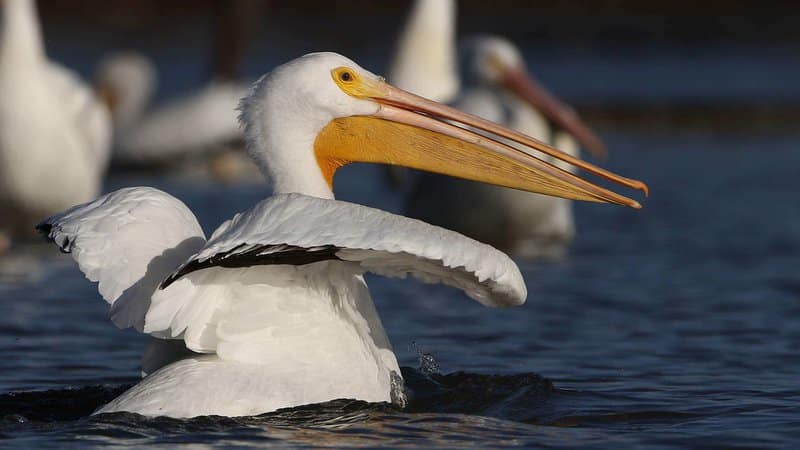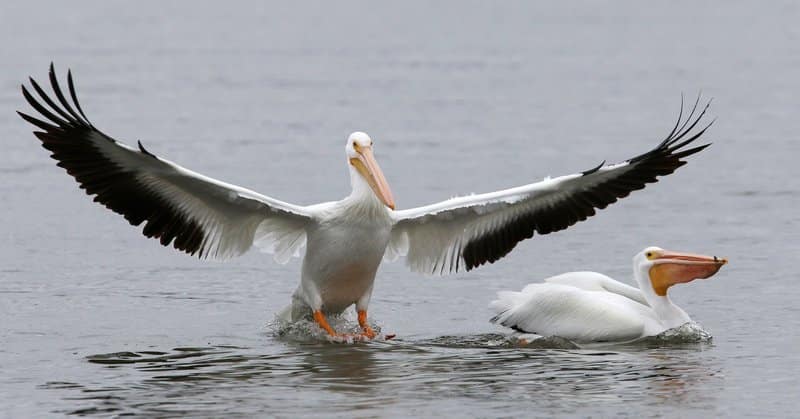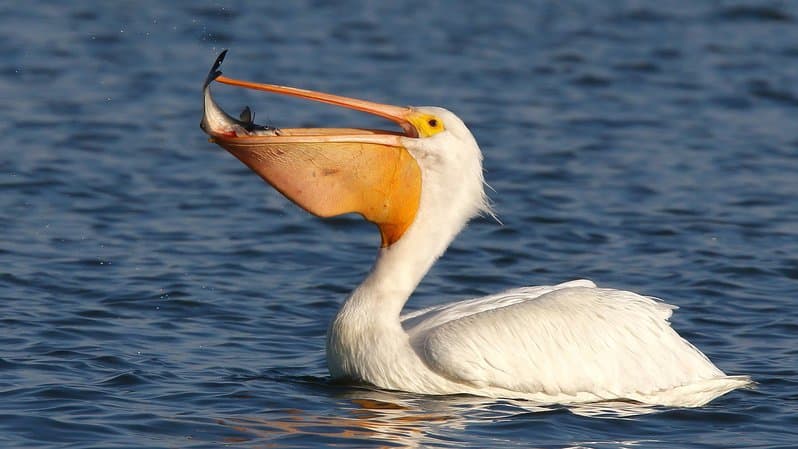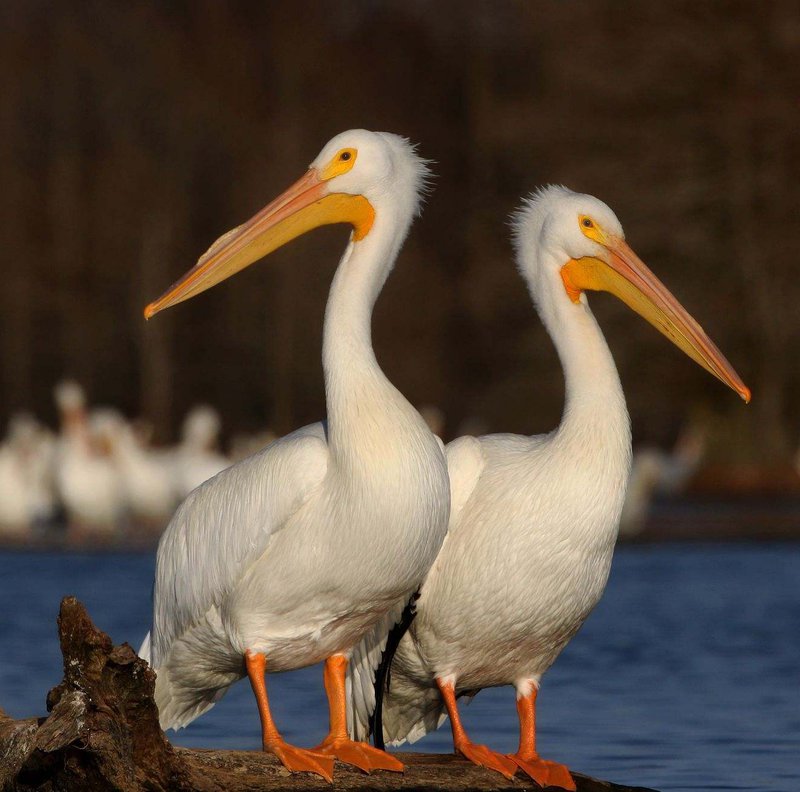Pelicans provide winter wildlife-viewing excitement
ON 12-14-2022

Dec. 14, 2022
Randy Zellers
Assistant Chief of Communications
Images by Chris Newberry
LITTLE ROCK — Although pelicans can be spotted any time of year in The Natural State, winter is prime time to visit reservoirs and dams along the Arkansas River and see flocks of these huge birds gathering and feeding on shad and other fish that are stunned after being pulled through the gates.
The most commonly seen pelicans in Arkansas are American white pelicans. An extremely rare sighting of the brown pelican, a coastal species, is reported. (Only four brown pelicans have been spotted in Arkansas in the last 10 years.) White pelicans are one of Arkansas’s largest birds, with some adults weighing 30 pounds and sporting wingspans that approach 10 feet. The wingspans of bald eagles, by comparison, typically top out at 7½ feet.

American white pelicans breed and nest in lakes and wetlands in the northern U.S. and southern Canada, and migrate to the coasts of the southern U.S., Mexico and Central America in winter. Some seem to find Arkansas winters agreeable and will hang out in areas below dams in man-made reservoirs where the water does not freeze.
Pouch Power
The trademark of all pelicans is the large pouch under their bills, which is used to engulf small fish. While some fish-eating birds, such as ospreys, may dive into the water after fish, white pelicans are a bit more relaxed in their eating habits. They float on the water and scoop up fish and water in the pouch. They’ll then hold their head up and drain the water, leaving their meal ready to swallow. White pelicans often hunt for food in groups. They will form a line and start swimming toward shore while flapping their wings, herding their prey until it’s pinned near shore. Sometimes, one group of pelicans will even drive the prey toward another group of pelicans.
Dating Outfits
One of the more peculiar aspects of white pelicans is the fibrous plate adults will develop on the upper part of their bill during mating season. The use or reason for this growth, called a nuptial tubercle, is still a mystery to biologists, but it is only present on American white pelicans and falls off after mating season has concluded. The chest of American white pelicans also will shift from its typical gray to a brilliant yellow during breeding season.

Where to Go
As previously stated, these gregarious waterbirds frequent areas around and below dams on rivers and reservoirs in Arkansas. The Big Dam Bridge and many other viewing points along the Arkansas River Trail are excellent places to keep an eye out for these conspicuous birds in Central Arkansas. Lake Conway also has a large population of white pelicans that always seem to make themselves known. Watchable Wildlife program coordinator Kirsten Bartlow also points to Lake Chicot in southeast Arkansas and Lake Dardanelle in the Arkansas River Valley as great hot spots for pelican-watching.
“Really anywhere you have big rivers and lakes, you’re bound to see them,” Bartlow said. “Some Arkansas Water Trails are on lakes and larger rivers, and I’d suggest giving those a visit as well. You can also use the ‘Explore Species Maps’ tab in eBird and search Arkansas for hot spots to see pelicans or any other species you’re after.”
Flocks of pelicans will soar on thermals, much like eagles and other raptors. The large birds can be identified by their bold white wings with contrasting black primary feathers.
“They’re really graceful fliers when you see them in the air, and they’re just an impressive bird to watch,” Bartlow said.

For birdwatchers and other outdoors enthusiasts who want to venture out by boat, Bartlow offers these tips.
“Winter birdwatching from the water can be a great, peaceful way to spend the day, as long as you prepare for wet, cold conditions,” Bartlow said. “Remember that sitting in a boat on the water will be a little chillier than on land, and always be sure to bring extra clothes in a dry bag in case you accidentally go overboard or get caught in a rain shower while you’re out.”
Visit https://www.allaboutbirds.org/guide/American_White_Pelican/overview for more information on pelicans, and be sure to visit the Arkansas eBird portal at https://ebird.org/ar/home to get more engaged in birdwatching in Arkansas.
Recent News

Arkansas Wildlife Weekly Fishing Report
Jul. 10, 2025

Lonoke aquaculturist named to AGFC
Jul. 10, 2025
Subscribe to Our Weekly Newsletter E-mails
Don’t miss another issue. Sign up now to receive the AGFC Wildlife Weekly Newsletter in your mailbox every Wednesday afternoon (Waterfowl Reports are published weekly during waterfowl season and periodically outside the season). Fishing Reports arrive on Thursdays. Fill in the following fields and hit submit. Thanks, and welcome!
